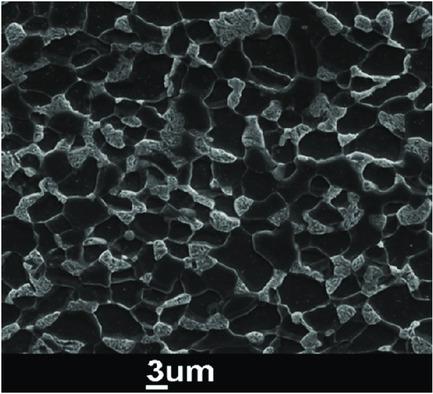当前位置:
X-MOL 学术
›
Steel Res. Int.
›
论文详情
Our official English website, www.x-mol.net, welcomes your
feedback! (Note: you will need to create a separate account there.)
Modeling of Bake Hardening Kinetics and Carbon Redistribution in Dual‐Phase Steels
Steel Research International ( IF 1.9 ) Pub Date : 2020-09-03 , DOI: 10.1002/srin.202000307 Yao V. Shan 1 , Mohamed Soliman 2 , Heinz Palkowski 2 , Ernst Kozeschnik 1
Steel Research International ( IF 1.9 ) Pub Date : 2020-09-03 , DOI: 10.1002/srin.202000307 Yao V. Shan 1 , Mohamed Soliman 2 , Heinz Palkowski 2 , Ernst Kozeschnik 1
Affiliation

|
The bake hardening response (BHR) of a dual‐phase steel with a martensite volume fraction of 0.22 is studied by means of mechanical testing, microstructural characterization, and computational simulation. After austenitization and quenching, the material is exposed to temperatures between 100 and 220 °C for times up to 10 000 min. The increase in yield strength during bake hardening (BH) follows the well‐known two‐stage characteristics. Herein, the kinetics of BH is analyzed on the basis of computational models for the formation of Cottrell atmospheres and precipitation, which represent the cause of strength increase, as well as the long‐range diffusion of C, which is partitioning between the martensite and ferrite phases during aging. The simulated yield strength evolution is in good agreement with the experiments. The model clearly describes the shape of the experimentally observed BH curves as a function of temperature, time, and degree of prestrain. In contrast to previous simulation attempts, all metallurgical phenomena are treated as coupled processes and modeled in an integrated framework based on a single set of input and state parameters.
中文翻译:

双相钢的烘烤硬化动力学和碳再分布模型
通过机械测试,显微组织表征和计算仿真研究了马氏体体积分数为0.22的双相钢的烘烤硬化响应(BHR)。奥氏体化和淬火后,材料暴露于100至220°C的温度下长达10000分钟。烘烤硬化(BH)过程中屈服强度的增加遵循众所周知的两阶段特征。在此,根据Cottrell大气的形成和降水的计算模型对BH的动力学进行了分析,这代表了强度增加的原因以及C的长期扩散,C在马氏体和铁素体之间分配老化阶段。模拟的屈服强度演变与实验吻合良好。该模型清楚地描述了实验观察到的BH曲线的形状随温度,时间和预应变程度的变化。与以前的模拟尝试相比,所有冶金现象都被视为耦合过程,并在基于单个输入和状态参数集的集成框架中进行建模。
更新日期:2020-09-03
中文翻译:

双相钢的烘烤硬化动力学和碳再分布模型
通过机械测试,显微组织表征和计算仿真研究了马氏体体积分数为0.22的双相钢的烘烤硬化响应(BHR)。奥氏体化和淬火后,材料暴露于100至220°C的温度下长达10000分钟。烘烤硬化(BH)过程中屈服强度的增加遵循众所周知的两阶段特征。在此,根据Cottrell大气的形成和降水的计算模型对BH的动力学进行了分析,这代表了强度增加的原因以及C的长期扩散,C在马氏体和铁素体之间分配老化阶段。模拟的屈服强度演变与实验吻合良好。该模型清楚地描述了实验观察到的BH曲线的形状随温度,时间和预应变程度的变化。与以前的模拟尝试相比,所有冶金现象都被视为耦合过程,并在基于单个输入和状态参数集的集成框架中进行建模。











































 京公网安备 11010802027423号
京公网安备 11010802027423号